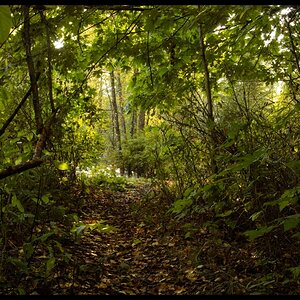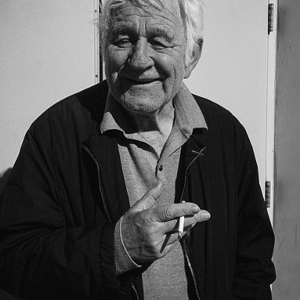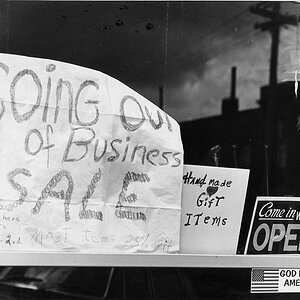Ok, reading many forums everybody agrees being it a TTL flash it is so nice because it calculates the amount of light needed according to what the camera measures through the lens.
But, I have many questions here, Im confused, please be patient, Im so ignorant:
1)Do I understand correctly TTL concept? I understand TTL flash is as if the camera's sensor measures the light through the lens then it computes the correct amount of light needed to have the "right" exposure and then the camera "tells" the flash "you know flash, Im pointing at that subject which seems to be so far away and I have these light measure and we need a bit more light, can you help me?" then the flash repies "ok, camera, I can help you, just let me adjust my power and I deliver as much as you need but keep in mind Im blind and I do as you tell me, you are my eyes and if you tell me you are under an underexposing situation this much or that much I will fire my power accordingly".
2)If the flash decides how powerful it fires according to what the camera measures (it is TTL, through the lens, right?) then wouldn't it be that overexposure will often be the result. Lets say we are in fully manual M mode and we try to set light meter to the right middle of the rule (no underexpose, no overexpose) then we set Aperture and Shutter speed so now we have "perfect" exposure, right in the middle of the rule. Then if this is perfect exposure and the flash fires, I would expect an overexposure all the time!! Right? So TTL is doing a disservice, right?
3)If I want to do some off camera flash shots and I have my model looking at me then I have these remote trigger that allows TTL remotely. Then I point my camera to my subject. Camera reads light, measures iit an tells the flash "this is the measure, lets do the job, flash". But it happens I want to create some sort of glamour or beauty light that's the very reason Im using flash off camera. And the flash fires according to what the camera measures through the lens. But the camera has one measure according to its position facing the model while from the point of view of the flash, it is another measure because flash is facing the model from a totally different angle, right? Then the flash would fire thinking it is facing the model from the same angle. Then, the wrong lighting would result, right? So TTL is doing a disservice, right?
What Im getting wrong?
Sorry, and thanks!!
But, I have many questions here, Im confused, please be patient, Im so ignorant:
1)Do I understand correctly TTL concept? I understand TTL flash is as if the camera's sensor measures the light through the lens then it computes the correct amount of light needed to have the "right" exposure and then the camera "tells" the flash "you know flash, Im pointing at that subject which seems to be so far away and I have these light measure and we need a bit more light, can you help me?" then the flash repies "ok, camera, I can help you, just let me adjust my power and I deliver as much as you need but keep in mind Im blind and I do as you tell me, you are my eyes and if you tell me you are under an underexposing situation this much or that much I will fire my power accordingly".
2)If the flash decides how powerful it fires according to what the camera measures (it is TTL, through the lens, right?) then wouldn't it be that overexposure will often be the result. Lets say we are in fully manual M mode and we try to set light meter to the right middle of the rule (no underexpose, no overexpose) then we set Aperture and Shutter speed so now we have "perfect" exposure, right in the middle of the rule. Then if this is perfect exposure and the flash fires, I would expect an overexposure all the time!! Right? So TTL is doing a disservice, right?
3)If I want to do some off camera flash shots and I have my model looking at me then I have these remote trigger that allows TTL remotely. Then I point my camera to my subject. Camera reads light, measures iit an tells the flash "this is the measure, lets do the job, flash". But it happens I want to create some sort of glamour or beauty light that's the very reason Im using flash off camera. And the flash fires according to what the camera measures through the lens. But the camera has one measure according to its position facing the model while from the point of view of the flash, it is another measure because flash is facing the model from a totally different angle, right? Then the flash would fire thinking it is facing the model from the same angle. Then, the wrong lighting would result, right? So TTL is doing a disservice, right?
What Im getting wrong?
Sorry, and thanks!!


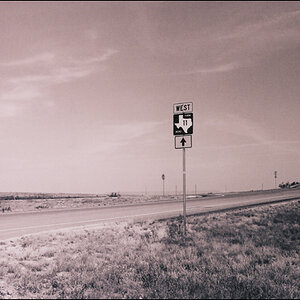

![[No title]](/data/xfmg/thumbnail/31/31707-a2840f3af9af3a4fa6f6dfbd4028eae5.jpg?1619734964)
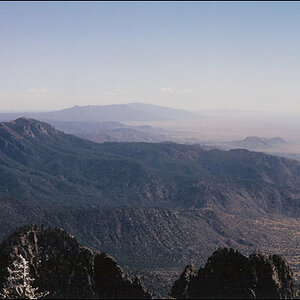
![[No title]](/data/xfmg/thumbnail/31/31705-3469470a562bc1a3bad361889544af19.jpg?1619734963)
